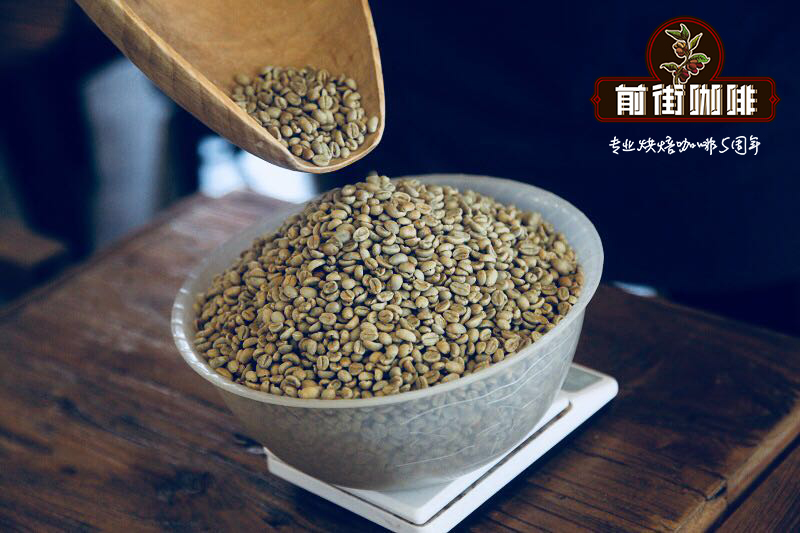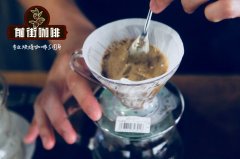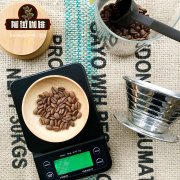Indian style Malaba treatment what is Indian monsoon coffee? What kind of coffee is Malaba coffee?

Professional coffee knowledge exchange more coffee bean information please follow the coffee workshop (Wechat official account cafe_style)
Indian-style Malaba coffee has been favored by Europeans since the 17th century. This kind of wind-stained coffee is a new flavor created inadvertently. In the 17th and 18th centuries, India shipped coffee beans to Europe by sailboat, which took six months. The raw beans were placed on the bottom of the barn and absorbed the moisture and salty taste of the sea. The raw beans arrived in Europe and deteriorated, and the color changed from dark green to yellowish brown of rice. The acidity of the coffee almost disappeared, but it unexpectedly developed a strong nutty and shell flavor, which tasted full of tea, with a bit of Xuanmi tea flavor. Nordic people like this kind of golden alternative coffee very much. In 1869, the opening of the Suez Canal, coupled with the advent of steamships, shortened the sailing time from India to Europe. However, customers began to complain that Indian coffee was "stale", lost its charming color and flavor, and orders plummeted, and Indian exporters began to study the solution. It was only then that it was found that the time for coffee beans to be shipped to Europe had been shortened by more than half, and the original flavor had been lost before it was ripe. Some smart people think of the salty and wet environment of the Indian sea from late May to September along the coast of Malabar in southwestern India. After several experiments, it is sure enough to produce a tawny coffee without sour taste similar to that of the past, so it is called monsoon bean, or wind-soaked bean.
Treatment method: wind stain treatment method
India's wind-stained Malaba coffee is a very famous boutique bean. The processing process requires manual hard selection of ripe cherry fruit. Through natural ripening, monsoon will occur in southwestern India in May and June every year, exposing raw coffee beans to the touch of seasonal sea breezes in the Indian Ocean, and coffee beans are swollen with a barley yellow appearance, with a taste similar to adult beans, low acidity and a hint of straw aroma. Can be said to be "coffee Pu'er tea", the taste is very unique to produce amazing taste.
Wind-stained beans are produced by the cooperation of the earth and the sea breeze to produce a complex and unique flavor. Wind-stained Malaba coffee is a unique coffee product on the west coast of Malaba. Coffee is processed here and shipped to all parts of the world. Early beans shipped from the coast of Malaba to Europe took six months. Under the influence of the sea breeze, these beans have undergone significant changes in flavor characteristics and color. These changes led to the birth of wind-stained Malaba coffee boutique beans. And it enjoys a high reputation in the Nordic countries.
Important Notice :
前街咖啡 FrontStreet Coffee has moved to new addredd:
FrontStreet Coffee Address: 315,Donghua East Road,GuangZhou
Tel:020 38364473
- Prev

Is Malaba Coffee of good quality? is Malaba Coffee good to drink by hand? characteristics of Malaba Coffee treatment
Professional coffee knowledge exchange more coffee bean information Please follow the coffee workshop (Wechat official account cafe_style) it is said that a long time ago, when raw coffee beans were shipped from India to Europe, changes were caused by high temperatures and moisture in the Indian Ocean, and this is where "wind stains" came from. In addition to the expansion and enlargement of the size of the raw beans after wind-soaked, the color of the raw beans is also changed from green to green.
- Next

Introduction to Malaba Coffee: how to Bake Malaba Coffee and how well it is roasted
Professional coffee knowledge exchange more coffee bean information Please pay attention to the coffee workshop (Wechat official account cafe_style) wind-stained Malaba coffee beans seem to be big and fat, but they are soft beans that are strong and dry outside, a change that has taken place after months of weathering. The coffee beans have been exposed to the wet monsoon for several weeks, which not only turns the beans yellow, but also reduces the acidity of the coffee itself.
Related
- Detailed explanation of Jadeite planting Land in Panamanian Jadeite Manor introduction to the grading system of Jadeite competitive bidding, Red bid, Green bid and Rose Summer
- Story of Coffee planting in Brenka region of Costa Rica Stonehenge Manor anaerobic heavy honey treatment of flavor mouth
- What's on the barrel of Blue Mountain Coffee beans?
- Can American coffee also pull flowers? How to use hot American style to pull out a good-looking pattern?
- Can you make a cold extract with coffee beans? What is the right proportion for cold-extracted coffee formula?
- Indonesian PWN Gold Mandrine Coffee Origin Features Flavor How to Chong? Mandolin coffee is American.
- A brief introduction to the flavor characteristics of Brazilian yellow bourbon coffee beans
- What is the effect of different water quality on the flavor of cold-extracted coffee? What kind of water is best for brewing coffee?
- Why do you think of Rose Summer whenever you mention Panamanian coffee?
- Introduction to the characteristics of authentic blue mountain coffee bean producing areas? What is the CIB Coffee Authority in Jamaica?

